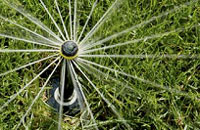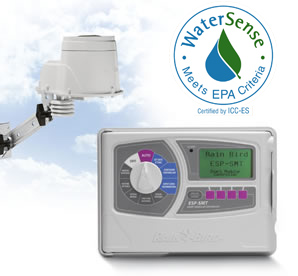Conserve water in your garden by using cycle and soak irrigation schedules
July 31, 2013 @ 6:04 pm
We’ve written a lot on this blog about ways to conserve water in your landscape. One of the easiest ways is to water your lawn and plants deeply but infrequently using a water-efficient technique called cycle and soak.
In the cycle and soak method, you water in increments (or cycles) until the soil has absorbed the maximum moisture before water starts running off onto the sidewalk or streets. Instead of watering for 20 minutes straight, for example, you water for 10 minutes, wait about an hour for the water to absorb, and water for another 10 minutes. Watering two times for 10 minutes will allow your lawn or landscape to absorb more moisture than watering for a straight 20 minutes.
Watering in increments allows the soil to absorb more moisture more slowly and to avoid sprinkler runoff. Water travels deeper into the ground; and roots follow, reaching deeper and broader into the ground for that moisture, creating a healthier lawn.
Most sprinkler systems can be programmed to water your landscape using the cycle and soak method. The amount of time you run your sprinkler will depend on the type of soil and the slope of your yard. Each zone of your landscape may need different amounts of water. Clay soils may take longer to absorb water, while sandy soils may take less time. Ideally, you want to water your lawn or landscape so that the soil is moist about 6-8 inches deep; you’ll know when you can easily push a probe through the soil to those depths.
Contact Ecoyards to setup a consultation if you’d like to make improvements to your irrigation system.
Filed under Seattle Irrigation Services, Seattle Landscape Maintenance Permalink · No Comments »








